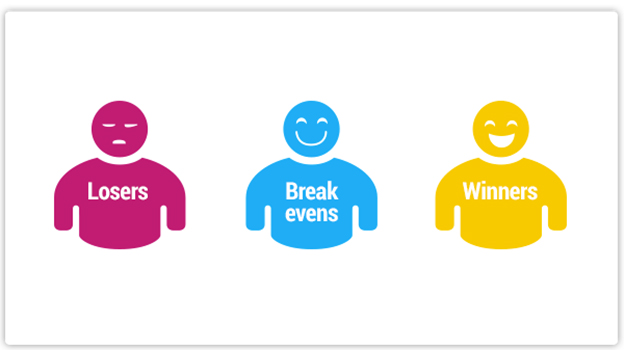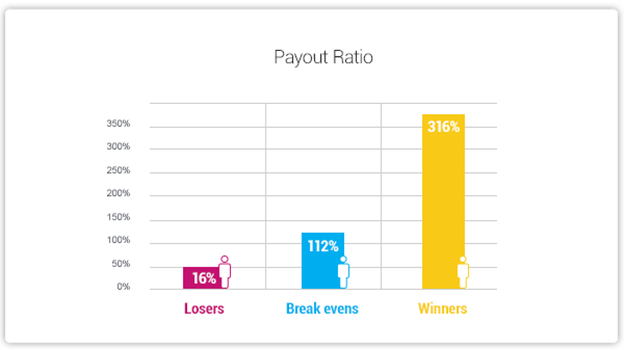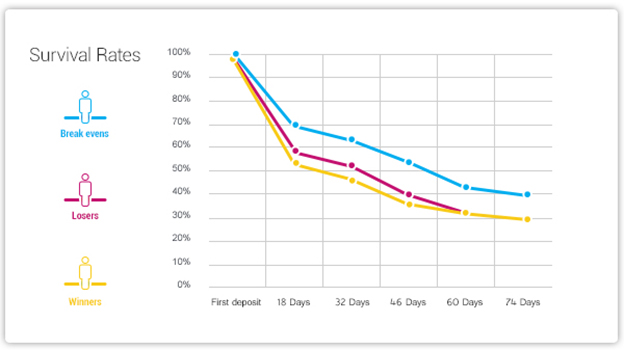This is a guest contribution by Moshe Demri, Director of Professional Services, Optimove. If you would like to submit a contribution please contact Bill Beatty for submission details. Thank you.
 At its heart, real-money gaming is an emotional experience. In that suspenseful moment right before finding out whether you’ve won or lost, your pulse quickens, your palms sweat, your mind focuses. The thrill of winning releases endorphins and creates a feeling of near euphoria, while the agony of a loss causes frustration and disgruntlement.
At its heart, real-money gaming is an emotional experience. In that suspenseful moment right before finding out whether you’ve won or lost, your pulse quickens, your palms sweat, your mind focuses. The thrill of winning releases endorphins and creates a feeling of near euphoria, while the agony of a loss causes frustration and disgruntlement.
For gaming operators and developers, it is important to understand the emotional responses of players and use them to their advantage. By striking the right balance of positive and negative emotions, it is possible for gaming operators to keep their users playing longer, engaging more deeply, and monetizing more effectively.
As a child growing up in a small town near the Sea of Galilee in Israel, every week I’d travel with my mother to the local supermarket. After finishing our shopping, she’d give me five shekels and I’d immediately run to the local lottery to buy scratch cards for a shekel each and, with a thrill, scratch to see if I’d won a prize.
I distinctly remember the different emotions I felt as a child, depending on the outcome of the scratch card:
- Frustration – If I lost all five shekels after buying five scratch cards, I’d feel lousy, stop playing, and not return to the lottery shop that day.
- Happiness – If I won a small amount from one or more of the scratch cards, I’d feel pretty good and would try my luck at another round of buying tickets.
- Euphoria – If I hit the jackpot and won 50 shekels or more from any of the five scratch cards, I’d shriek with delight and immediately run to buy candies. I’d never dream of squandering another shekel on an additional scratch card – I wouldn’t want to push my luck!
The Three Main Emotional Gaming Personas
To understand how my childhood experience is reflected in the world of real-money gaming, we studied data from our network of gaming clients. We analyzed the behavior of thousands of players across more than a dozen gaming operators in a variety of categories, including casino, bingo, sports and slots.
Based on our research, we identified three main player personas. The first persona we’ll call Losers, or players who lose most of their money, similar to when I would fail to win anything from any of the scratch cards I bought. These players are likely frustrated and disappointed, and as a result, they tend not to return to the game.

On the opposite side of the spectrum, we have the Winners. These are the players who succeeded in winning large amounts. Similar to when I won the jackpot with the scratch cards and didn’t want to push my luck by taking any more chances, these customers feel so euphoric from their experience that they don’t want to risk losing that feeling—or their winnings—and they often decide to pocket their money and quit the game permanently.
In between these two personas we find the Break Even players. Just like when I won a small amount from my scratch cards, these are the players who’ve either won or lost in moderation and have therefore had a good enough experience that they continue returning to play the game time and again.
Of course, we don’t have a way to identify customers based on their emotional experiences alone, but we can identify these personas through their behaviors, using data. For our research, we based our clustering on the players’ payout ratio (the win amount divided by the wager amount) during the first 15-20 days since a player’s first deposit.
This is how we defined each cluster:
- “Losers” – players that had a payout ratio between 0% and 70% in the measured timeframe (for example, a player who wagered $100 and won $30 will have a 30% payout ratio, and will be attributed to this cluster)
- “Break Evens” – players that had a payout ratio ranging between 70% and 170% in the measured timeframe
- “Winners” – players that had a payout ratio above 170% in the measured timeframe.
In the chart below, you can see the average payout ratio of players in each cluster, during the measured timeframe:

After their first 15 – 20 days playing a game, the payout ratio for Winners was 316%, meaning that for every dollar they played, they won back $3.16. For Break Even players, the payout ratio was an average of 112% after 15 – 20 days, meaning they won a more modest amount of $1.12 for every dollar they played. Losers, meanwhile, only won back an average of 16% of their wagers, or $0.16 for every dollar they played. You can imagine the different psychological affects that winning big or losing big would have on a player versus someone who either won or lost in moderation. It’s very similar to my experience with the scratch cards.
In order to examine the long-term effect of this initial experience, we can take this analysis a bit further by conducting survival rate analysis on all three groups, as we’ve done in the chart below.

As you can see, the survival rates of the Break Even players is notably higher than those of either the Losers or the Winners. The survival rate of Break Even players 18 days after their first deposit is 70%, meaning that 70% of Break Even players still remain active after 18 days. That is a 1.26X improvement over the survival rate of Winners and 1.19X over Losers. This difference remains fairly constant, as Break Even players show a 27% increase in survival rates over both Winners and Losers as late as five months after their first deposit.
It is worth noting that the survival rates of Winners and Losers are approximately equal. Losers do have a slightly higher survival rate in the early going—during the first couple of months—which might indicate that the agony of defeat is not as powerful a trigger in forcing them away as the thrill of winning is. But the survival rates converge after 60 days and remain fairly constant afterwards.
Maintaining Positive Emotional Experiences
Gaming operators should ask themselves which marketing actions might prevent the two groups on the extremes from churning with such high frequency. Losers, for example, could be enticed into playing again with a campaign offering a certain cover for all losses for a limited time. This type of campaign may be successful in gaining back the confidence of these customers, giving them a better experience and encouraging them to continue to play.
On the other hand, you’d want to prevent Winners from withdrawing their money and leaving, so you might want to craft a campaign offering them additional wins on top on what they would otherwise receive. This type of campaign might convince players to push their luck and not withdraw all of their money – at least not yet.
Once we understand customer behavior more deeply, we gain a better understanding of their emotional states as they play, and we can leverage those insights to drive player engagement, retention and lifetime value. While the nature of real-money games necessitates a certain amount of Winners and Losers, we must learn to mitigate these extreme cases with relevant engagement campaigns that keep players happy and prevent them from leaving for good.
Moshe Demri, Director of Professional Services, Optimove
As the director of Optimove’s professional services team, Moshe Demri is focused on helping clients enhance their customer marketing strategies, optimize their retention plans, and utilize their use of the Optimove software. Moshe has vast experience consulting clients as a data scientist, analyzing their customer data and revealing actionable, data-driven marketing insights. Moshe holds a BSc in Industrial Engineering and Management, specializing in Information Systems.